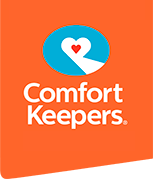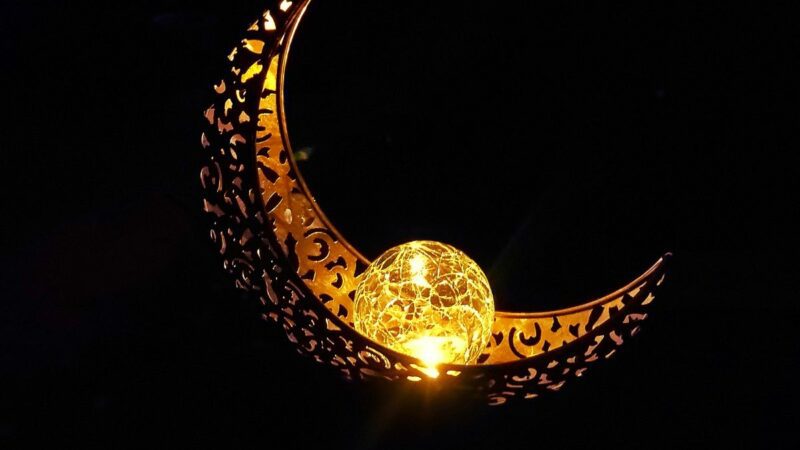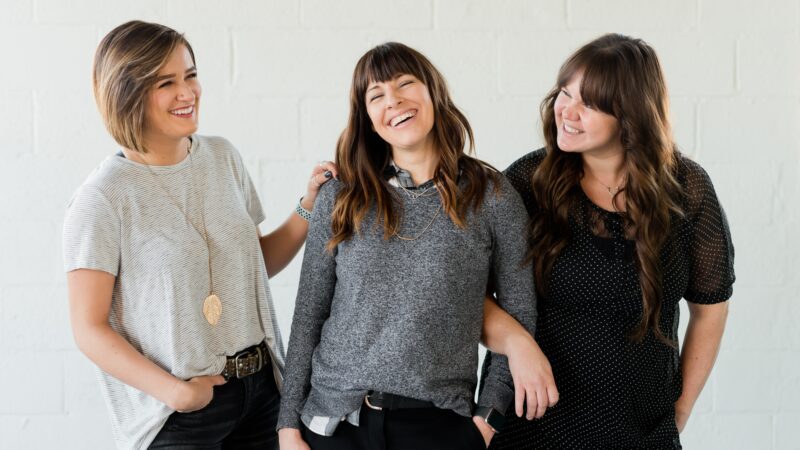The World Health Organisation (WHO) didn’t officially acknowledge osteoporosis until 1994. That’s when it began defining it as a disease. A lot has changed since then. The prevention and treatment of this painful bone condition have come on in leaps and bounds, however, there is still a great deal of work to do. World Osteoporosis Day on 20th October is an opportunity to unite and raise awareness about how we can stop the disease. Read on to discover more about osteoporosis and how Comfort Keepers leads the way in terms of both the prevention and care of it within the home.
What is Osteoporosis?
Osteoporosis is a disease that causes bones to become weak and fragile. This, in turn, raises the risk of breaking a bone even after a minor fall, bump, sneeze or sudden movement. The disease displays no obvious symptoms.
1 in 3 women and 1 in 5 men over 50 will suffer an osteoporotic fracture. Lots of them may not even know they have the disease until they experience the break. Fractures can be life-changing and painful. They can lead to disability, as well as loss of independence, making good bone health even more critical.
Fractures that are the result of osteoporosis have a debilitating impact on millions of people every year. This, in turn, ends up incurring huge socio-economic impacts and costs for public health services. In recent years, there have been significant and effective medical advances to reduce fractures, however, large numbers of people still require treatment every day across the globe.
Only 20 per cent of patients with osteoporotic fractures actually ever get a formal diagnosis, even though it’s the underlying disease. In 2010, in Europe, more than 12 million people considered to be high risk for osteoporotic fractures received no treatment at all.
Who’s High Risk?
Around 300,000 people in Ireland may have osteoporosis. Over 50s are particularly vulnerable with 20 per cent of Ireland’s women and just over 6 per cent of men in that age group are likely to have osteoporosis.
Women tend to be more prone to the disease due to smaller bone structure and the significant hormonal changes they experience in later years. Some women can lose excessive quantities of bone substance after menopause. Other factors that are outside our control include:
- Age: we’re at greater risk as we get older
- Ethnic background: Caucasian and Asian people are more prone
- Family history: increases danger of developing it
- Small body frame: however, one not the result of an eating disorder, although over-dieting or excessive physical training can also increase the risk.
Lifestyle or Dietary Choices and Medical Conditions
What we choose to eat or drink can also heighten the risk of an osteoporosis diagnosis. This, along with a lack of daily physical exercise, includes:
- Having too much fibre in our diet
- Smoking
- Drinking too much alcohol or caffeine
Calcium and vitamin D are both vital for good bone health. If you don’t get the daily recommended amounts, then you could increase the risk of breaking bones. If you’re a vegan, the recommendation is to eat a wide variety of food types and to get regular DXA bone scans.
Medical conditions and certain medications can also affect our bone health. These include:
- Long-term use of steroids often used for arthritis or asthma
- Chemotherapy and radiotherapy
- Long gaps in periods (not as a result of pregnancy)
- Having an overactive thyroid or parathyroid gland
- Coeliac and Crohn’s disease as they affect the absorption of essential nutrients
- Some medicines used for breast or prostate cancer and epilepsy
Signs & Getting a Diagnosis
Although nobody displays symptoms before breaking a bone, there can be signs that act as red flags to suggest osteoporosis may be present. These include pain due to an undiagnosed broken bone in the back and a loss or change in body height.
If you are at risk of bone loss, experts recommend having a DXA scan, similar to an X-ray. It measures bone density and will show if you are at risk of breaking bones.
High-risk groups should try to have a DXA scan every two years or once a year if possible. Your doctor may tell you that you have osteopenia, referring to the early stages of osteoporosis.
It’s worth bearing in mind if you’re worried that a typical DXA scan contains 10 percent of the radiation compared to a regular Chest X-ray. If you’ve ever flown across the Atlantic from Ireland then you would have exposed yourself to more radiation by taking the flight than in a DXA scan.
Treatments For Osteoporosis
There is a wide range of treatments for osteoporosis available in Ireland. These can either help to stop bone loss or lead to an increase in the formation of bones, reducing the risk of breaking them.
The right choice of treatment will depend on a person’s DXA scan results. Doctors will also take into account the underlying causes of bone loss. They’ll do this in conjunction with the further risk of breaking bones as well as a person’s age, gender, and medical history.
Potential treatments include various hormonal therapies and medications. These decrease the rate a person loses bone thus lowering the risk of fractures. Injections of a “bone cement” into broken vertebrae are also possible. There are similar treatments that involve surgery.
Potential loss of independence and the risk of breaking bones generally far outweigh any possible side effects.
Calcium and Vitamin D
Because older people are more prone to osteoporosis, attention to diet and exercise are essential. It’s important that both these key lifestyle elements form part of the plan if a person is in receipt of homecare.
This is where Comfort Keepers can play such an important role. CK works with the HSE to provide a full range of homecare and healthcare support services. Our highly-trained team of healthcare assistants can provide support. They’ll help ensure their clients are getting sufficient exercise and eating appropriately.
A balanced diet and taking the right amount of exercise will help. Together they will strengthen bones while a patient is taking prescribed medication for Osteoporosis. Supplements may also be beneficial.
It’s essential that the diet includes plenty of calcium and vitamin D for a person’s overall and bone health. Foods containing large amounts of calcium include:
- Dairy products like milk, cheese, and yoghurt
- Vegetables with large green leaves: ideal for vegans and the lactose intolerant
- Okra and fish like canned salmon or sardines and fortified breakfast cereals
Sunlight is a great source of vitamin D although it’s important to follow the advice around using sunblock. Egg yolks, fatty fish and fortified milk are other good sources. It may be necessary to take a vitamin D supplement on top of a regular diet. In fact, the Irish government has been recommending vulnerable groups do this for quite some time.
Regular Exercise
Getting the right amount of regular exercise is good for both physical and mental wellbeing. It makes sense to incorporate certain types of exercise into your routine that will improve balance and coordination. This can then play a part in lowering the risk of losing one’s balance and then breaking bones.
If you have been experiencing bone loss or want to try to stop it from happening, weight-bearing aerobic exercises are going to help. These involve using your feet and allowing your bones to support your weight. Examples include:
- Walking and dancing
- Low-impact aerobics
- Elliptical training machines like cross-trainers
- Walking up and down stairs and gardening
If you have osteoporosis, it’s a good idea to get assessed by a physiotherapist before starting out on any exercise programme. Go for a light walk and try to use the stairs rather than taking the lift or using an escalator if possible.
Swimming is great for health and fitness there’s a low level of impact on the knees and other joints but it is not a weight-bearing exercise. Some yoga stretches may not be a good idea.
Managing Osteoporosis
The Comfort Keepers homecare teams can offer encouragement to the elderly. Our carers can help ensure they eat the right kind of diet and take the correct types of exercise appropriate to their fitness level and ability.
As well as taking meds, exercising regularly and eating a healthy diet, it is important to make sure the home is a safe environment. This will help to mitigate the chance of trips and falls. For those with osteoporosis, falls often lead to broken bones.
There’s plenty you can do to lower the danger of a fall in the home to either yourself or a loved one. All of these will help:
- Handrails on stairs and grab bars in bathrooms
- Removing loose rugs and cables
- Ensuring hallways and stairs have sufficient lighting
- Wearing shoes that fit properly and have non-slip soles
- Placing non-slip mats in front of kitchen sinks and in bathrooms
Mark Your Calendars for October 20th!
Comfort Keepers believes World Osteoporosis Day is an important day in the calendar for us all. October 20th acts as a reminder of the actions we can take for both ourselves and a loved one to look after bone health.
CK offers a broad range of homecare and healthcare support services. These help all elderly people, including those with Osteoporosis, to live independently.
Find out more about how Comfort Keepers could help support you and your family. Contact us today for information.
Connect with us
To begin starting care for your loved one, you can click here.
To join our incredible award-winning team, you can apply now by clicking here or emailing your CV to recruitment@comfortkeepers.ie




